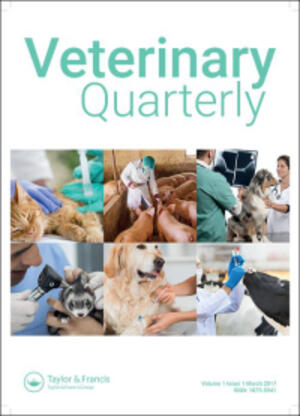
A global examination of ecological niche modeling to predict emerging infectious diseases: a systematic review
Abstract
Introduction: As emerging infectious diseases (EIDs) increase, examining the underlying social and environmental conditions that drive EIDs is urgently needed. Ecological niche modeling (ENM) is increasingly employed to predict disease emergence based on the spatial distribution of biotic conditions and interactions, abiotic conditions, and the mobility or dispersal of vector-host species, as well as social factors that modify the host species’ spatial distribution. Still, ENM applied to EIDs is relatively new with varying algorithms and data types. We conducted a systematic review (PROSPERO: CRD42021251968) with the research question: What is the state of the science and practice of estimating ecological niches via ENM to predict the emergence and spread of vector-borne and/or zoonotic diseases?
Methods: We searched five research databases and eight widely recognized One Health journals between 1995 and 2020. We screened 383 articles at the abstract level (included if study involved vector-borne or zoonotic disease and applied ENM) and 237 articles at the full-text level (included if study described ENM features and modeling processes). Our objectives were to: (1) describe the growth and distribution of studies across the types of infectious diseases, scientific fields, and geographic regions; (2) evaluate the likely effectiveness of the studies to represent ecological niches based on the biotic, abiotic, and mobility framework; (3) explain some potential pitfalls of ENM algorithms and techniques; and (4) provide specific recommendation for future studies on the analysis of ecological niches to predict EIDs.
Results: We show that 99% of studies included mobility factors, 90% modeled abiotic factors with more than half in tropical climate zones, 54% modeled biotic conditions and interactions. Of the 121 studies, 7% include only biotic and mobility factors, 45% include only abiotic and mobility factors, and 45% fully integrated the biotic, abiotic, and mobility data. Only 13% of studies included modifying social factors such as land use. A majority of studies (77%) used well-recognized ENM algorithms (MaxEnt and GARP) and model selection procedures. Most studies (90%) reported model validation procedures, but only 7% reported uncertainty analysis.
Discussion: Our findings bolster ENM to predict EIDs that can help inform the prevention of outbreaks and future epidemics.
Citation
Lawrence, T.J., Takenaka, B.P., Garg, A., Tao, D., Deem, S.L., Fèvre, E.M., Gluecks, I., Sagan, V. and Shacham, E. 2023. A global examination of ecological niche modeling to predict emerging infectious diseases: a systematic review. Frontiers in Public Health 11: 1244084.










